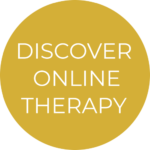Trauma Therapy
(Somatic Experiencing®)
We all deserve to live our lives to the fullest. My goal in Somatic Experiencing® (SE) trauma therapy is to empower my patients so that they can feel good about themselves, heal old wounds and free themselves from the traumatic energy stored in their bodies.
“ Suffering is part of the human condition. If we simply try to avoid confronting painful experiences, there is no way to begin the healing process ”
Peter Levine
What is it about ?
Somatic Experiencing® (SE) is a body psychotherapy approach (body, mind and emotions) developed by Dr. Peter Levine and successfully applied in clinical interventions for over 45 years. Its goal is to resolve and overcome, among others, traumatic events and / or chronic stress.
Trauma occurs when we are faced with a situation in which something that “activates” us (activates our nervous system, our defense system) happens too fast, too soon or in too large a quantity (too much).
The cause can be an isolated event, or a series of repetitive events whose impact accumulates over weeks, months or even years.
When this happens, our nervous system does not have the capacity to cope with such activation, nor to integrate the emotions and sensations attached to the event: it is simply TOO MUCH.
The energy generated by the activation then remains “trapped” in the body (thus causing a dysregulation of the nervous system and multiple symptoms), until it is discharged.
How to be present in the present moment when the past doesn’t stop knocking at the door?
Often times, situations that remind us of the traumatic event “activate” us in the same way, causing difficulties in our daily life, in our relationships with others and with ourselves.
SE’s approach to therapy is different fro the traditional one: we pay attention to the body, the autonomic nervous system and the bodily sensations.
We focus on the physiological sensations and responses that occur in the body when someone experiences or remembers a traumatic event in their body, not in the thoughts or ideas associated with that event (even if we can find space for those too, but they’re not the central elements of the therapy).
Through this method, we manage to anchor the feeling of well-being and security in the body, before starting to work on trauma in a progressive, respectful and attentive manner.




Trauma Symptoms
They may appear right after the traumatic event or may remain “asleep” for years, until something wakes them up.
Some may be very obvious (nervous twitch, anxiety, panic attacks) but others are very subtle, we may even consider them as personality traits (lack of self-esteem, difficulty making decisions, tendency to perpetuate abusive relationships…).
- Shock, negation, disbelief
- Panic attacks
- Phobias
- Intrusive images or flashbacks
- Less ability to deal with stress
- Dissociative states
- Confusion, difficulty concentrating
- Flattened emotions
- Memory loss
- Anxiety and fear
- Excessive guilt and shame
- Sadness and despair
- Feeling disconnected or anesthetized
- Exaggerated fear of own death or that of loved ones
- Loss of belief (spiritual, religious or interpersonal)
- Difficulty bonding with others and showing feelings
Avoidant behaviors (avoiding certain places, activities, movements, people, etc.)
Anger, irritability, sudden mood changes
Hyper-vigilance
Hyper-sensitivity to noise and light.
Attraction by dangerous activities
Addictive behaviors (smoking, using alcohol or other drugs, eating without control…)
Hyperactivity
Easy and frequent crying
Exaggerated or almost nonexistent sexual activity
Nervous twitches
Self-harm (cuts, abuse of one’s own body, etc.)
Insomnia or recurring nightmares
States of chronic fatigue or lack of physical energy
Omnipresent fear
Problems with the immune system
Difficulty concentrating
Tachycardia or sympathetic activation without external stimulation
Nervousness and restlessness
Psychosomatic pain
Muscle tension
Tension musculaire




When to consult ?
Chronic stress
Post-traumatic stress disorder (PTSD), result of various situations (repeated humiliations, war, natural disasters…)
Developmental trauma (parental neglect, domestic violence, sexual, physical or verbal abuse, traumatic separation of parents, unstable and / or insecure environment, illnesses, etc.)
Occasional or repetitive aggression (physical, sexual, verbal, emotional, bullying, etc.)
Burnout
- Accidents (automobile, work, falls, drowning)
- Invasive surgical procedures (with or without anesthesia)
- Experience or testimony of violent acts (domestic violence, rape, etc.)
- Sudden death of a loved one
- Emotional breakdowns, relationship problems, co-dependence
- Phobias
- Pre or perinatal complications (during or before birth)
- Anxiety / Depression




What to expect from therapy ?
- Learn to pay attention to your bodily sensations (the felt sense) here and now, and to explore the variations that occur during the session.
- Get access to patterns of physiological restorative action, that is, “pathways” through which traumatic energy can be released in a controlled, gradual and safe manner.
- Increase your resilience to deal with stress, anxiety, life challenges and intense or difficult emotions.
- Learn to recognize and accept the emotions that you feel (naturally and inevitably) in your daily life.
- Restore the natural fluidity of the functions of the nervous system.
- Increase your capacity for self-regulation (learn to calm down) and co-regulation.
- Establish or reestablish healthy personal boundaries (internal and external) while learning to take care of yourself.
- Explore the “healthy aggression“, while staying away from violent tendencies.
- Develop your ability to create stronger and more secure social and emotional ties.
- Learn to pay attention to the signals that your body sends and reconnect with its innate wisdom.
- Increase the harmony between your body, your mind and your spirit.
- Learn to identify and use your multiple resources, everything that helps you out in difficult times.
- Increase the window of tolerance for difficult feelings and emotions, as well as for the more pleasant ones.
- Strengthen your capacity to be more in the present moment (here and now), in contact with the world around you (physically as well as socially).
- Learn the language of bodily sensations, completely attached to our emotions, permanently present but often avoided by our conscious mind because of a society which pushes us to “disconnect” from our bodies to live only through our mind.
- Increase your feelings of general well-being and connect more easily with your internal joy and lightness.








